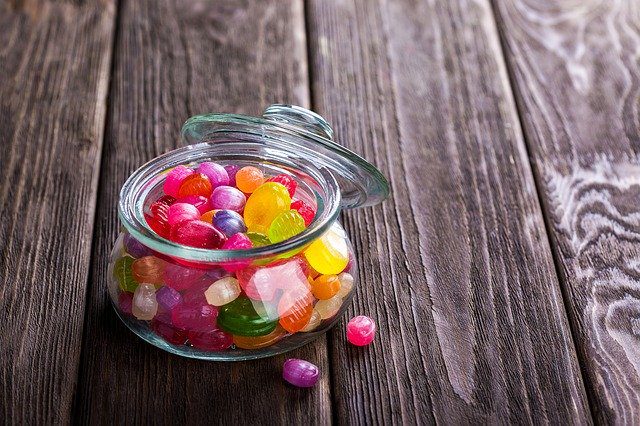Packaged and processed food contains acidity regulators or food additives that are added to food to maintain or change the pH of the material. These could be either used to maintain the acidity or alkalinity of the food. They are both organic and inorganic mineral acids, neutralizing agents, bases, or even buffering agents. They are commonly known as food acids and have names such as Food acid 330 given to them. The commonly used agents are citric acid, lactic acid, and acetic acid. There are seven food additives that you don’t need to worry about.
Table of Contents
Food Acid 330 is a naturally occurring citrus derivative
Food acids of any kind are used in processed and packaged food as a preservative, fat modifier, and pH balancing agent. Every chef or home cook has used it at one point in the kitchen. Acid regulator 330 is a natural additive that is extracted from citrus fruits. It can also be synthetically made, but the organic firm is generally available easily.
The acidity regulator 330 is rampantly used in most foods and beverages. It imparts a tangy and sour flavor to the food. The ingredient is known to have a preservative effect too. It acts as a fat regulator in preparations like cheese and ice cream. The citric acid modifies the fat cells in ice cream and acts as a stabilizer. This helps the ice cream to stay frozen and hold its texture for a longer period of time. Beverages like aerated drinks, beer, wine, squashes, juices, and effervescent drinks often have preservative 330.

Many personal care products like bath bombs and other natural soaps and scrubs may also have 330 food acid added. These products often have high oil content and the citric acid helps in regulating the fat cells.
Side Effects of Food Additive 330
Although this is a safe food additive, you must be careful while ingesting any products that have Food Acid 330 on the label. There are a few acidity regulator 330 side effects that you should know about. If you have any allergies or drug interactions with medication that are triggered by this product, it is better to abstain from the 330 acidity regulator. Most people who are intolerant to MSG may face this issue, as the properties are similar. You may face stomach ailments if you cannot tolerate citric acid.
You can break out in hives or even eczema if you are allergic to acid 330. It is fairly well tolerated and very few people are allergic to citric acid. But, nonetheless, you should be careful when you read the label.
Food acid 260 or Acetic acid
Food Acid 260 or Acidity regulator 260 is an organically found acid that is present in vinegar. It is also called Ethanoic acid or Glacial Acetic acid. Acetic acid gives vinegar a distinctly sour taste and pungently distinctive smell. It is a clear liquid. It is also often prepared in laboratories as synthetic vinegar. This food additive is generally used in small quantities to add taste and sourness to balance the flavor.
Food Acid 260 is seldom utilized as a condiment. The ingredient is extensively used in pickles, salad dressings, chutneys, sauces, ketchup, and cheese, the vinegar of different origins, cereals, ice cream, and muesli bars too. It is often the base ingredient in pickling mixes as it acts as a preservative too.

Side effects of Acetic Acid
The FDA has given its nod to this particular food additive as a safe product. There may be stray cases where minor issues have been reported. This is generally restricted to allergic reactions. The severe allergic reactions may include hives, rashes, tightness in the chest, labored breathing, swelling of the face, mouth, and tongue, sensitivity, and irritation. Do take into account that the ingredient is a safe one but allergies can lead to mild to severe reactions.
Mineral salt 518 is an extensively used food additive
Mineral salt 518 is also called Epsom salt. The chemical name of the salt is Magnesium Sulphate. It is a mineral salt that is extensively used as a firming agent by chefs. The product is marketed as a white powder or crystals, which may also exist as a colorless powder. The salt is found in seawater in abundance. It is a readily available and cheap source of soluble magnesium. Most pharmacies carry Epsom salt as it is a safe natural laxative.
Many supplements would also have Magnesium Sulphate as an ingredient. You can get it naturally from milk, whole grains, spinach, bananas, nuts, and meats. Most green vegetables also have this salt in some amount.
Side effects of Magnesium Sulphate
Although Magnesium Sulphate or Epsom salts is generally a very safe additive to food, some people may suffer mild side effects. The ingredient may cause dizziness, confusion, irregular heartbeats, muscle weakness, sleepiness, and low blood pressure. The side effects are rarely seen but warrant a visit to your doctor if noticed.
Food Acid 332 or Potassium Citrate
Potassium Citrate is a safe Acidity Regulator by the name E332. E is the prefix that is added to a food additive in European countries. The salt is an antioxidant and is considered safe for consumption. It is the potassium salt of the acidity regulator 330 or citric acid. It is also manufactured commercially by fermenting solutions of carbohydrates like hydrolyzed corn starch or molasses with Aspergillus Niger. The product of this process is a white powder that is crystalline in nature.
Potassium Citrate or acidity regulator 332 is soluble in water. It is used extensively as an acidity regulator or buffering agent. It is extensively used in foods like sweets, jams, ice creams, aerated and carbonated drinks, wine, processed cheese, and milk powder. The compound Tripotassium Citrate is also commonly used as an over the counter antacid. There are no known side effects of this food acid 332.

Food Acidity Regulator 270 or Lactic Acid
Lactic acid is a popular acidity regulator that also acts as a preservative and color retention agent. It has a special function as a flavor enhancer. It is commonly used in the patisserie industry in cakes, biscuits, and baked goods. The Food acid is also used as a stabilizer in salad dressings, sweets, sour milk, and yogurts, ready to eat and dressed meats and poultry. It is also commonly found in wheat-based beer, soft drinks, baby food, and formulas. The ingredient is also found is pickled foods, tinned vegetables, and fruits.
The natural sources of this acid are apples, sour milk, tomatoes, and molasses. It can be commercially produced by adding heat to fermented carbohydrates present in potatoes, molasses, and cornstarch. You should avoid giving it to infants and young babies as they are unable to digest it. They do not produce the enzymes that are needed to digest lactic acid.
Food Acids 331- Sodium Citrate
Sodium Citrate or E331 is a powerful food acid used in the food industry that is actually the sodium salt of Citric Acid. It is commonly used as a buffering agent, emulsifying agent, stabilizing agent, flavor enhancer, and also a nutritional supplement that is added to buttermilk. It is a popular ingredient with the chefs as a preservative and quality enhancer.
It is used in conjunction with Soy products, bakery products, dairy-based confectionery, instant food, desserts, vegetables, seafood, sweet spreads, infant formula, baby food, dressings, and sauces. Beverages like alcoholic beverages, aerated drinks, energy drinks, juices, syrups, coffee and tea, and energy drinks.
Since it is a sodium-based additive it is best that you are careful about reading labels. It may be counterproductive if you are having high blood pressure.
Acidity regulator 296 or Malic Acid
A potent but mild acid that is naturally present in apples, lychees, bananas, cherries, nectarines, and more. Malic acid is used as a preservative and a food additive. It is very mild and has many health benefits in its natural form. Food acid 296 is often used as a souring agent in hard candies, beverages, and supplements. This flavor enhancer is widely used in addition to artificial sweeteners as it masks the slightly bitter aftertaste very effectively.
This organic and natural food acid has a favorable impact on chronic fatigue, dry skin, and fibromyalgia. It is a favorite supplement for people who face chronic pain. It is quite safe and should be taken in permissible limits. Small children and infants should not be given Malic acid as their digestive systems are not capable of handling the compound.
Acidity regulator 575- Glucono delta-lactone
E 575 or Glucono delta-lactone is called GDL in short. It is a food additive that occurs naturally. It has a number of functions in the food industry. It is an acidifier that helps in the pickling and curing process. GDL is also a powerful leavening agent. It is capable of raising a dough volume by producing gas. It is also a sequestrant. It restricts the formation of “stone” while manufacturing beer. It is found in processed meat, gluten-free foods, and cheese.
Quick Read : All you need to know about Acidity Regulator INS 330.
Frequently Asked Questions
Here are some interesting FAQs on Food Additives :
1. What food additives should be avoided?
Some of the food additives that must be avoided are – trans fat, sodium nitrite, artificial food coloring, high fructose syrup among others.
2. What are the benefits of food additives?
Food additives serves the following purposes :
- It helps improve the texture of the food.
- Preserves the nutrition value.
- Enhances the flavor.
3. What are natural additives?
Natural additives are basically additives extracted from plants, animals and minerals.
4. Is E330 safe to eat?
Yes. E330 is safe for consumption.
Conclusion
All these seven additives are relatively safe to consume and occur naturally. It is better to check labels to understand the composition. They can cause side effects only when you are allergic to them. It is always better not to give very young children food that has food acid 330 and other additives. Hope from the above guidelines you won’t question what is an acidity regulator.


